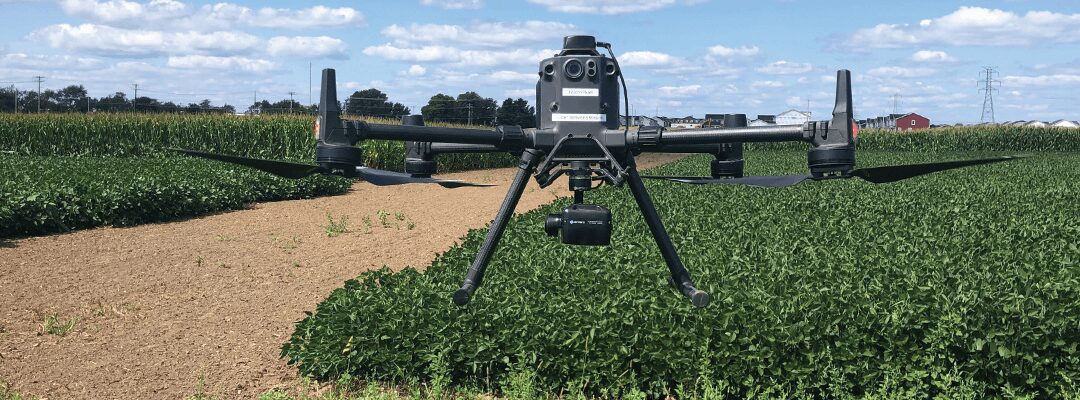Drone technology in agriculture has provided solutions to a variety of challenges by providing more efficient and accurate data capture, with less resources. And gaining deeper insight into field and plot performance starts before the actual data capture itself.
There are a few questions that help guide how and why you are capturing data, including: What are you looking for? Do you have specific concerns? What are you trying to accomplish? What are you looking to validate? This helps pinpoint the ag analytics that really matter.
So, what are the best methods to uncover the ag analytics you need throughout the growing season?
The Power of Ag Analytics
While there are a variety of ways to capture ag analytics, these insights can also be leveraged in different uses. Ag analytics provide valuable insight into everything occurring in your field or plot, from crop health to soil quality – and everything in between. So, let’s dive into a few of the ways in which ag analytics can be leveraged to provide value in different operations.
Data analytics provided by aerial imagery, most often captured by drone technology in agriculture, allow a deeper look into early-season crop growth rates. Fueling timely and well-informed decisions that have the power to optimize productivity through the end of season. Some of these include:
- Emergence assists in modeling and monitoring growth rates to understand crop development
- Uniformity gives a perspective into plot size estimation and how it will impact future measurements
- Vigor indicates how rapidly a seedling grows and how environmental factors are impacting growth
When honing in on the seed production side of using ag analytics, the goal is boosting yields and therefore profitability. Being able to accurately (with little variability) gain insight into yield throughout the season allows you to predict future productivity and make changes if deemed necessary. Some of the key analytics to leverage in seed production are:
- Stand Count which provides the earliest indications of field health, plant population, and emergence percentage; a M/F variation can be useful to understand hybrid seed potential
- Crop Health provides a look into health, maturity, and stress
- Tassel Count helps to gain an understanding of performance and final indicator of yield; as well as gives insight into detasseling operations with a male/female variation
There are many more uses of key data analytics that provide immense value to ag researchers, product developers, and growers. They assist in validating outcomes and informing critical decisions that can result in a more productive season. So, how do you capture these analytics efficiently and with limited variability?
Drone Technology in Agriculture: The Missing Piece
Drone technology in agriculture has advanced the capabilities of data collection by providing timely, precise, and accurate data without the risk of objectivity posed by manual methods. When you rely strictly on boots-on-the-ground scouting, the data being collected is at-risk of human-error. And we know how unpredictable the agriculture industry can be, so limiting variability at every opportunity should be taken advantage of.
Aerial imagery covers more ground, more accurately, and in a more efficient manner. And ag drone systems have taken that precision to a completely new level with the constant innovation and advancements made to the technology. From ultra-high-resolution sensors to advanced georeferencing systems, we are able to gain a deeper understanding of what is occurring within fields and plots; as well as, where.
Not only this but with multispectral drone sensor technology, such as NDVI and NDRE, it also allows insight beyond the naked eye. This is what allows you to gain deeper data analytics, like Crop Health, by leveraging different light bands to pick up on stress and health. This is due to light reflecting differently due to chlorophyll levels – which is a key indicator of crop performance.
By leveraging ag drone systems, capturing key data analytics is more convenient and efficient without sacrificing quality – which is vital when informing critical decisions and validating outcomes.
Trust the Experts: Let Us Fly for You
Between time constraints and limited labor, there seems to not be enough time in the day to do it all. Regardless of the reasoning, sometimes owning and operating a drone yourself isn’t the option for you. And just because you do not own the drone yourself, does not mean that you can’t reap the benefits provided by aerial imagery – like valuable analytics. Sometimes going through a third-party is the most efficient and effective option for your needs and end-goals.
By entrusting an outside team, you are leaving it to trained pilots who will ensure you get exactly what you need. Sentera’s Flight Services is a prime example of a third-party resource to leverage to do the flying and data capture for you. The extensive experience of our pilots promises mission success while allowing you to preserve your own time and resources.
And just because you don’t have the equipment yourself, doesn’t mean you have to necessarily sacrifice the convenience of easy access and flight. With over 250 trained pilots worldwide, we are able to accommodate your needs and ensure you are getting the data you need, when you need it.
When selecting the data collection method for you, it comes down to your operations needs and goals. Whether or not you want to fly yourself or hire an outside party, the most important factor is getting the data you need, when you need it.


